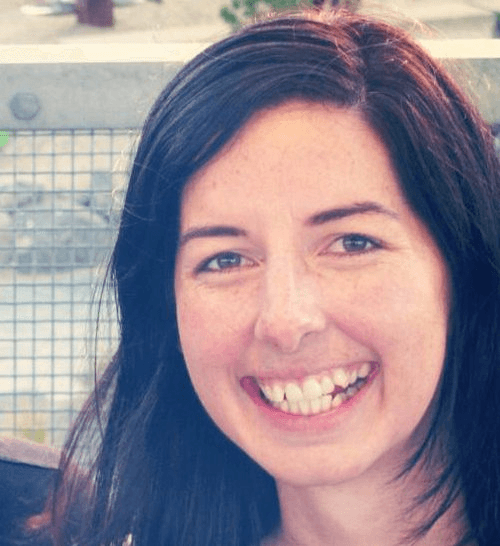Achieving a better, fairer Auckland involves much more than just building affordable homes. Urbanist Jenny McArthur explains why liveability should be a key demand of the War for Auckland.
As an academic specialising in infrastructure and urban growth, I’ve been delighted by how The Spinoff’s War for Auckland series has helped stimulate the public’s interest in urban planning. Suddenly it seems everyone has a competing opinion on building consents, densification and upzoning. And that’s great. But instead of focusing entirely on house prices and the Unitary Plan’s capacity to accommodate forecast growth, I’d like to see the conversation expand beyond the private realm.
“To make Auckland the world’s most liveable city.” That’s the key objective of the Auckland Plan, the 30-year masterplan of which the Unitary Plan is just one component. To many, “liveability” is little more than glib political rhetoric. But liveability touches every aspect of the public debate over Auckland’s future. If liveability is to be translated into meaningful planning decisions we need to start taking the concept much more seriously.
The idea of liveability first emerged as leefbaarheid, a term used in Dutch rural policy in the 1960s. As more people moved from the countryside into cities, questions were raised about whether the tide might be stemmed by improving the quality of life in rural areas. Several years later the concept was flipped into the urban context, as a slogan for local government elections in Vancouver in the 1970s. After several terms of “growth-centred” policies, it became apparent that making a city as economically productive as possible didn’t always result in a place where people wanted to live. According to Canadian geographer David Ley, liveability represented a more “humane, socially progressive, and aesthetic” approach to the urban development of Vancouver.
More recently, the liveability concept has been adopted by Monocle magazine and the Economist Intelligence Unit (EIU), who both publish annual “liveability rankings”. Auckland performs well in these rankings, and it is rarely outside the top 10. But do they tell us anything meaningful, or are such rankings simply a way of packaging the urban experience as another form of conspicuous consumption?
By definition, international rankings of the quality of urban life are only useful to those with the luxury to be able to make such decisions on where to live. This group, not coincidentally also Monocle’s target market, is typically made up of highly-skilled professionals with specific preferences for vibrant cities with good schools, an interesting restaurant and entertainment scene, ample sunshine, and good international transport connections. Any form of political unrest is undesirable: in 2015, Hong Kong fell 15 places in the EIU’s Liveable Cities Index as a result of the Umbrella Revolution, suggesting that exercising one’s right to peaceful protest is at odds with their version of liveability.
Liveability is a useful frame of reference, but I’d like to see Auckland re-appropriate it to serve not only the city’s international reputation, but Aucklanders themselves. French sociologist Henri Lefebvre talked about the “right to the city”, arguing that for cities to thrive, the people who live there need political agency, and to use that to shape the city’s development toward the common good (not just to preserve private property values). It doesn’t require a revolution, just that the public get involved. Exercising our “right to the city” means lobbying to shape urban development for a fairer Auckland, rather than leaving decisions to the politicians and bureaucrats.
It’s plain that liveability means something different to everyone: that is exactly the point. Cities are nearly always diverse; with an ethnic migrant population of 40%, Auckland is officially “super-diverse” and has a unique Māori heritage. Instead of focusing solely on housing, urban planning should consider and support Auckland’s unique diversity. The things we share in cities, including public spaces and infrastructure, can be designed in a way that works for different needs and preferences. At a recent Auckland Conversations event, Colombian urbanisation expert Gil Peñalosa framed it like this: “People who are 8 and 80 are the indicator species for good places to live. Redesign our cities to keep them safe, healthy and happy, and we’ll have a place that works well for everyone”. Simply expanding the design requirements for streets, public space and transit infrastructure so that they can be used by elderly or disabled residents, and allow children to play safely, makes a huge difference.
Factoring diversity into city planning means responding to the changing needs of the people who live there. Right now, London is partway through a £4.2 billion roading project – not to build more roads or expand capacity, but to retrofit dozens of major arterials and junctions. Currently, most of the road space and priority for movement is given to vehicles, while tens of thousands of pedestrians and cyclists shuffle around the edges each day, enduring unsafe levels of air pollution and an unreasonable risk of being hit by a vehicle. Redesigning transport infrastructure can open up new areas for locals to use, replacing busy intersections they’d previously try to avoid.
Liveability rests on the idea that there is a relationship between your experience of the built environment and your quality of life. Academics have been drilling down on these connections for decades, looking at the relationships between transit infrastructure and social exclusion; cycle paths and traffic safety; public lighting and reduced crime; and urban trees and air quality. The epitome of urban researchers’ obsession with this relationship is found in William H. Whyte’s The Social Life of Small Urban Spaces. The 1980 documentary the study of how the design of public spaces shapes how people use them and interact.
https://vimeo.com/111488563
The film has dated, but the findings are still useful: “It is far easier and simpler to create spaces that work for people than those that do not – and a tremendous difference it can make to the life of a city”. Liveability pays more attention to human needs, but it isn’t socialism by way of urban policy – some of the biggest improvements toward urban liveability were made in New York and London, under the watch of mayors Michael Bloomberg and Boris Johnson, two firmly conservative politicians.
Instead, liveability looks to change the way we design a city’s shared areas and infrastructure so that they are places where people want to be. Some Aucklanders might argue that you don’t need public spaces if you have your own backyard. However the Unitary Plan allocates around 60% of growth to intensified development, often dwellings without a backyard. Making higher density housing viable depends on improving the quality of public space and transit infrastructure so that residents don’t lose out from living in a relatively smaller home.
Auckland may be able to accommodate a million extra people over the next 30 years, but at the current rate of vehicle ownership this will equate to around 700,000 more cars on the road network. Providing transit services that make car-free living a convenient and affordable option is non-negotiable to support the anticipated growth. Intensification without the accompanying investment and planning for liveable public spaces and infrastructure, risks making the newspapers’ “urban ghetto” scare stories a reality.
If Auckland’s problem isn’t framed properly in the first place, the solution isn’t likely to be something Aucklanders are satisfied with. In the same way, framing the city’s future solely as a question of housing supply and property prices ignores the critical role public spaces and transit infrastructure play in creating viable growth, and ensuring that Auckland is liveable for future generations.
Public space includes everything beyond the front gate: streets and transport infrastructure, parks and squares, walking and cycling paths and public facilities. The War for Auckland should not be reduced to a battle over private space alone. If Auckland is to be a city where people not only can afford to live, but want to live in the future, then public space, infrastructure – and yes, liveability – can’t be left out of the fight.





